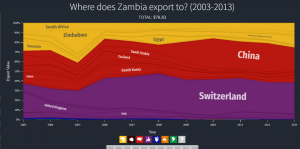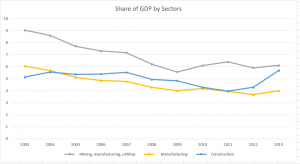This summer, I worked with Professor Su on the topic of Chinese resource export in global developing countries. The study was a supplement for Professor Su’s paper on Chinese export and the case of resource curse of developing country. I was responsible for writing the case study in his paper.
We spent most of our first 2 weeks find the most appropriate subject for study. After we were certain that our case will be on Zambia, a country that was heavily invested by Chinese companies, we analyzed the economic and political situations that the Zambian government faces before and after the Chinese influences started to go their way in Zambia. We set the time framework for two groups as “2003-2007” and “2009-2013”. In the first time period, China was only a minor player in the export market, but from 2009, China becomes one of the biggest importers of Zambian Copper.
The last two weeks of our research, we had two more case studies, namely Ethiopia and Chile. Chile has the same product for export as Zambia: copper ores; Ethiopia was geographically close to Chile and was also very tight in its relationship with the Chinese government. However, Professor Su and I argued that Chile was different from Zambia that Chile’s institutional set-up was much more democratic than Zambia; Ethiopia, alternatively, exports a very different product to Zambia. As Zambia focuses it export industry in products such as Copper, Ethiopia specialized in oily seeds and other agricultural goods.

What we find throughout the data in two time periods was that Zambia, as well as Ethiopia, experienced a fall in the manufacturing sector’s share of GDP, indicating an increasing level of de-industrialization within these economies. However, Chile, with a more robust political institution, was more resilient to the possible consequences of resource curse.
